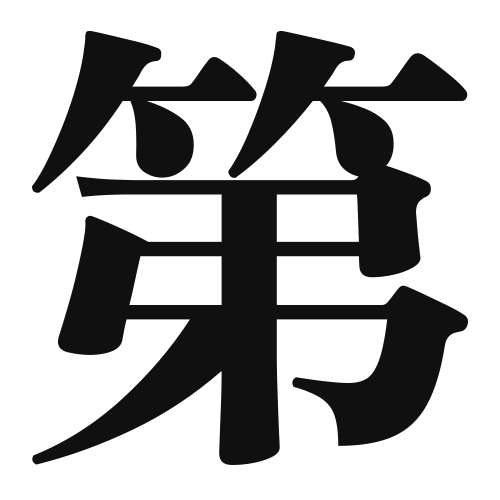1. Overview of Meaning
The kanji “第” (dai) means “number” or “ordinal,” indicating the order of something in a sequence, such as “first,” “second,” or “third.” It is commonly used to denote rankings or positions.
2. Formation and Radical
The kanji “第” is a compound character (会意文字) that combines elements to convey its meaning. It consists of the radical “竹” (bamboo) on the left, which is often associated with counting or order, and the character “弟” (younger brother) on the right, which adds a sense of sequence or hierarchy.
The radical “竹” is significant as it relates to traditional counting methods in Japan, where bamboo sticks were used for tallying.
3. Examples of Usage
Common words and phrases that include “第” are:
- 第1章 (dai 1 shō) – Chapter 1
- 第2回 (dai 2 kai) – The second time or event
- 第3者 (dai 3 sha) – A third party
Example sentences in daily conversation:
- 「この本の第1章を読みました。」(I read Chapter 1 of this book.)
- 「第2回の会議は来週です。」(The second meeting is next week.)
4. Synonyms and Antonyms
Similar kanji with related meanings include:
- 「順位」(jun’i) – rank or order, which emphasizes the position rather than the ordinal number.
Antonyms include:
- 「最初」(saisho) – the beginning or first, which refers to the starting point rather than a sequential order.
5. Cultural and Historical Background
The kanji “第” is deeply rooted in Japanese culture, where order and hierarchy are significant in various aspects of life, including education and social structure.
Proverbs and idiomatic expressions that include “第” often reflect the importance of ranking and order, such as:
- 「第1印象が大事」(Dai 1 inshō ga daiji) – The first impression is important.
This highlights how the concept of order and ranking permeates social interactions in Japan.
